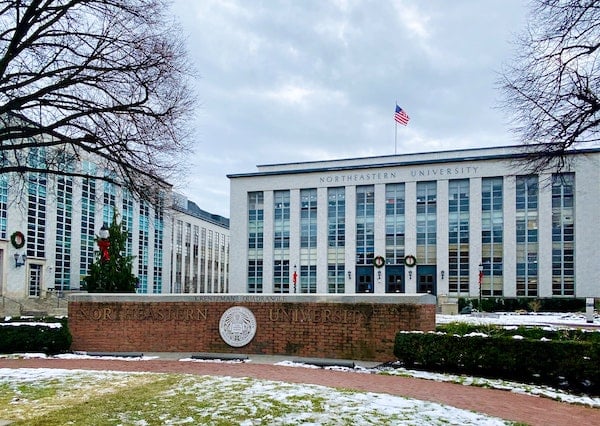Published on
Learning from Experience: Northeastern’s Robust Connections Between Classroom and Commerce

To get an idea of the importance Northeastern University places on experience in education, look no further than the ’About’ section of the university’s website. “Experience is at the core of all we do,” reads the headline. Experience fuels agility and gives you the ability to reinvent yourself. I was grateful when Cheryl Richards, Ph.D., and Kemi Jona, Ph.D., took some time to share their own experiences at Northeastern, a CAEL member institution. After all, it’s hard to think of a time when the ability to adapt to change and overcome obstacles was more important.
Cheryl is the CEO and founding regional dean of Northeastern University–Charlotte. The Charlotte campus was the first in what has become a global network of Northeastern campuses. Kemi serves as the university’s assistant vice chancellor for digital innovation and enterprise learning. CAEL spoke to them about ways higher ed can approach enterprise organizational engagement. Using a holistic lens that recognizes students, faculty and employers as clients, they offer examples of how they’ve integrated workforce and educational solutions.
The solutions fall into four general areas framed by industry priorities. Because they all focus on the link between education and meaningful work, they have common tactics and strategies. The university developed a customized program to build civic engagement among leaders at a consortium of more than 20 major companies. It includes employees in Charlotte and across the globe. Northeastern also designs customized corporate learning solutions with pathways into degree and credential programs. This creates powerful recruiting benefits. For companies focused on more granular and immediate learning solutions, the university builds upskilling and reskilling programs for existing employees. And, it works with enterprises to incorporate experiential learning, jobsite instruction and stackable associate degrees from partner institutions to create access to career pathways for employees.
The common thread between all sectors is the goal of helping employers solve talent gaps outside of the traditional graduate pipeline. As Cheryl puts it, Northeastern University regards employers equally as clients and consumers. The educational programs they require may not always have a place within the traditional academic model. But if they solve the talent gap, they will always have a place within economic and regional development. That is critical for keeping an institution relevant for all stakeholders.
How can higher ed ensure it’s doing that? Cheryl challenges us to reassess the role of higher ed in serving society. Being mindful of its needs allows a focus on diverse vocations, not just the traditional elite professions. Cheryl recognizes this can be like turning the Queen Mary. To succeed, she recommends being an “innovator with persistence.” She contrasts that with being a persistent innovator. The subtle difference lies in choosing the right course and following it. It’s not about innovating for the sake of innovation.
Still, the need for occasional course adjustments is inevitable. Cheryl and Kemi both credit Northeastern leadership’s embrace of lifelong learning for maintaining agility at a time when the future of education seems like it’s being invented piecemeal. The university places a premium on frontline experience with employers. It looks to Cheryl and her colleagues to establish regional campuses as systemic leaders, not siloed followers. That role begins and ends with listening to what employers are asking for.
Admittedly, Northeastern had a head start of sorts in employer engagement. With a long history of co-op and experiential learning, the university has amassed about 4,000 corporate partners around the world. It can tap into them anytime. But Cheryl reminds us that any institution can forge its own relationships with the industries in its own communities of practice.
To start, when approaching potential partners, she suggests that institutions be as strategic about whom they engage as they are about their messaging. She notes that the typical liaison is a scouting representative focused on hiring interns and graduates. To innovate at a program level, Cheryl says institutions must expand. HR or learning and development staff are fundamental. They are more likely to think holistically about the skills and competencies employees need across prioritized functional groups. For maximum effect, institutions should establish rapport with operational leadership. COOs, CFOs, or directors of functional lines within a company are all great resources. They can pinpoint critical talent gaps, whether they’re tactical capabilities or soft skills.
Making such quality connections may seem daunting. That’s especially true if an institution is just beginning to test the waters of employer engagement, but there are sound starting points. Any college can become a trusted industry ally. In the process, they’ll also become a more effective gateway to meaningful employment. Kemi notes that business schools, boards of trustees and alumni are all potential sources of engagement with local companies. Hosting events can also be effective in bringing employers to the table. For example, Northeastern organizes industry roundtables. They focus on talent development in various sectors. Convening people to focus on talent pipelines can establish an institution as a go-to industry resource.
Both Cheryl and Kemi note that internal stakeholder engagement is equally important. Once an institution understands an industry need, it needs to assess it in terms of its ability – or appetite – to invest in it. A college starting from scratch may want to pursue smaller engagements to build a library of offerings. More established institutions might “swing for the fences” and target major corporations for greater revenue potential.
Either way, Cheryl and Kemi you need to engage subject matter experts within the institution the moment you have the skeleton of an idea. Validation is vital, whether it comes from faculty members, deans or department heads. It confirms that an institution can deliver an industry solution.
Sometimes, business development teams at a college may encounter a “chicken and egg” dynamic. This occurs between corporate and internal clients. As Kemi frames it, do you start with an understanding of what the university and faculty are interested in innovating around and then seek out partnerships in the marketplace accordingly? Or do you start in the marketplace and bring problems back to your institution for them to solve?
Cheryl and Kemi agree there’s not a universal answer; they recommend being open to some combination of both. On one hand, businesses like to see evidence of your capability to deliver customized, work-relevant curricula (another argument for starting small). On the other hand, you have to be prepared to show a return on investment. Perhaps college leadership is interested in serving the target population. Or they may be drawn to a potential boost in the university’s revenue and prestige. If so, they are more likely to incorporate business engagement as an ingrained strategy.
Cheryl and Kemi tell us that rejections are part of any effort to build connections between “theory and practice.” They come from both internal and external partners. The key is to keep a foot in both worlds so you can learn from the experience of each. Eventually, they say, you recognize opportunities that are appealing to all parties. Identifying who in your organization are early adopters and champions is key. Inevitably, a handful of faculty or deans in every school is looking for a partner to help actualize its vision of better connecting learners with positive real-world outcomes. Enlisting their help can land quick wins, which can showcase the value of such partnerships to the institution and employers. Institutions can build on these proof points to make successive engagements easier to realize.
In a sense, some of this discussion may be a moot point, at least for universities that want to thrive in a rapidly evolving landscape. Both Cheryl and Kemi argue embracing lifelong learning is more critical than ever for higher ed. Looking ahead, they see closer partnerships between education and employers as a way for institutions remain relevant beyond the traditional four-year model. If institutions don’t occupy this space, they will see corporations filling the vacuum by unilaterally investing in internal educational resources. Such a trend could challenge the relevance of higher ed in general. That’s an experience any institution should want to avoid.
It’s always a pleasure for me to write about the great work CAEL institutional members like Northeastern University are doing for working adult learners. To share your own success story or become a CAEL member, please contact cael@cael.org.
Author Perspective: Administrator



